8 ways to winterize a balcony and weather-proof yours like a pro, leaving it intact, ready and raring to go in spring
Expert advice to ensure your balcony is ready for the cold season
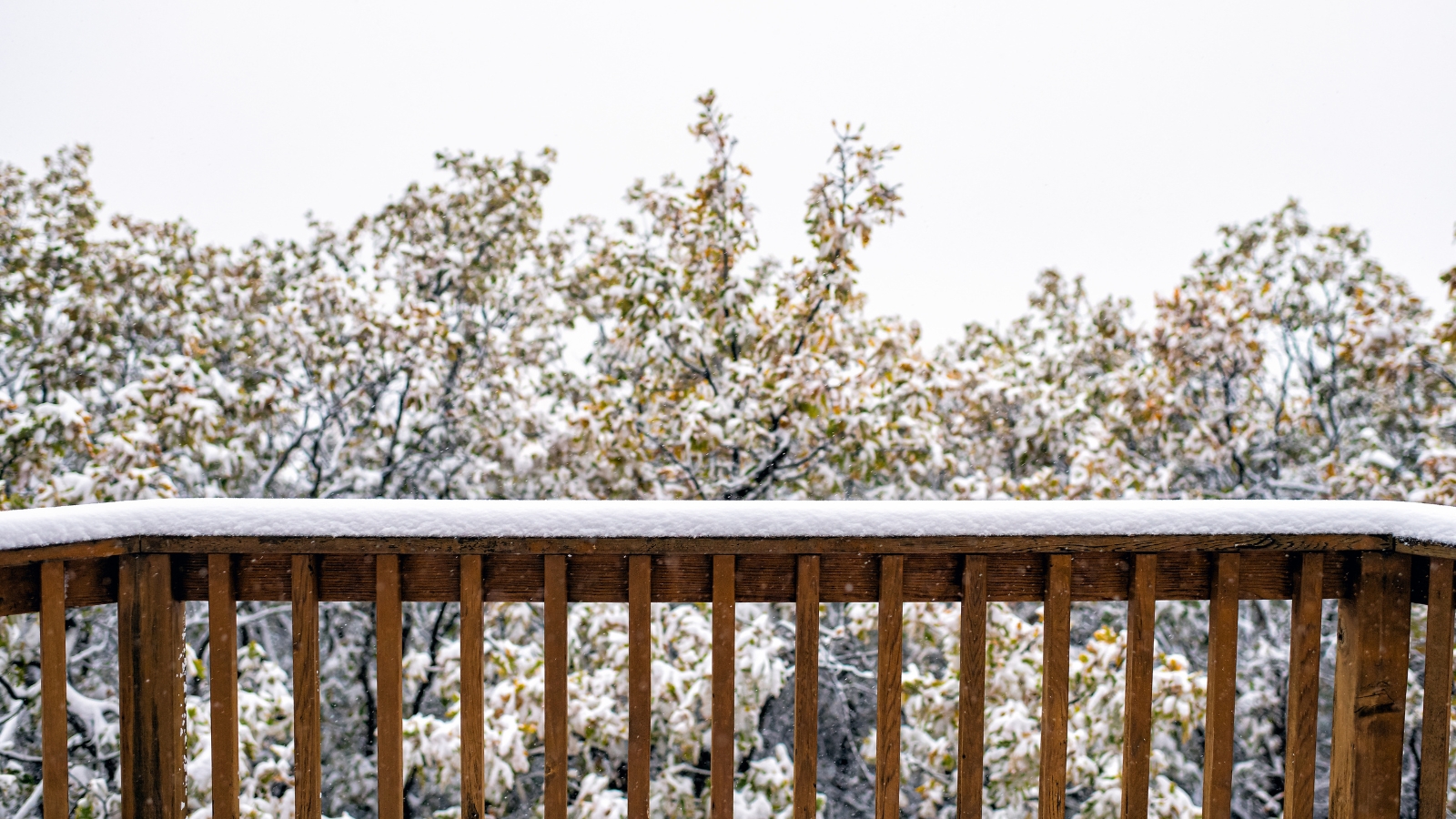

Winterizing your balcony protects it from cold weather damage and ensures that when it finally warms up and you want to use it more, it's ready to go.
From protecting your furniture to resealing grout, follow our home experts' eight simple steps to keep your balcony in top shape during the colder months.
When it comes to winterizing a house, it makes sense to start from the most vulnerable spot, open to the elements – your balcony.
Step 1: Protect outdoor furniture

Cold temperatures and moisture can damage outdoor furniture, so it's best to get it protected before the big freeze.
Jon Christensen, CEO of home improvement hub Bidmii, says, 'Ahead of winter, covering your balcony furniture with weather-resistant materials can extend its lifespan by shielding it from snow, rain, and freezing temperatures.
'To do this, first clean your outdoor furniture to remove any dirt or debris that could lead to mold or mildew. Once it's dry, cover each piece with a durable, waterproof cover that fits securely. I recommend the Duck Covers Ultimate Patio Furniture Covers from Classic Accessories. They're made of heavy-duty material that resists tearing and have secure tie-downs to keep the covers in place during windy conditions.'
Ben Soreff, professional organizer at House to Home Organizing, adds, 'Another option is to group all your balcony furniture under an all-in-one cover, such as this ULTCOVER Rectangular Heavy Duty Cover from Amazon.'
For balcony furniture inspiration, check out our guide to the best outdoor furniture for small spaces.
Step 2: Insulate water fixtures
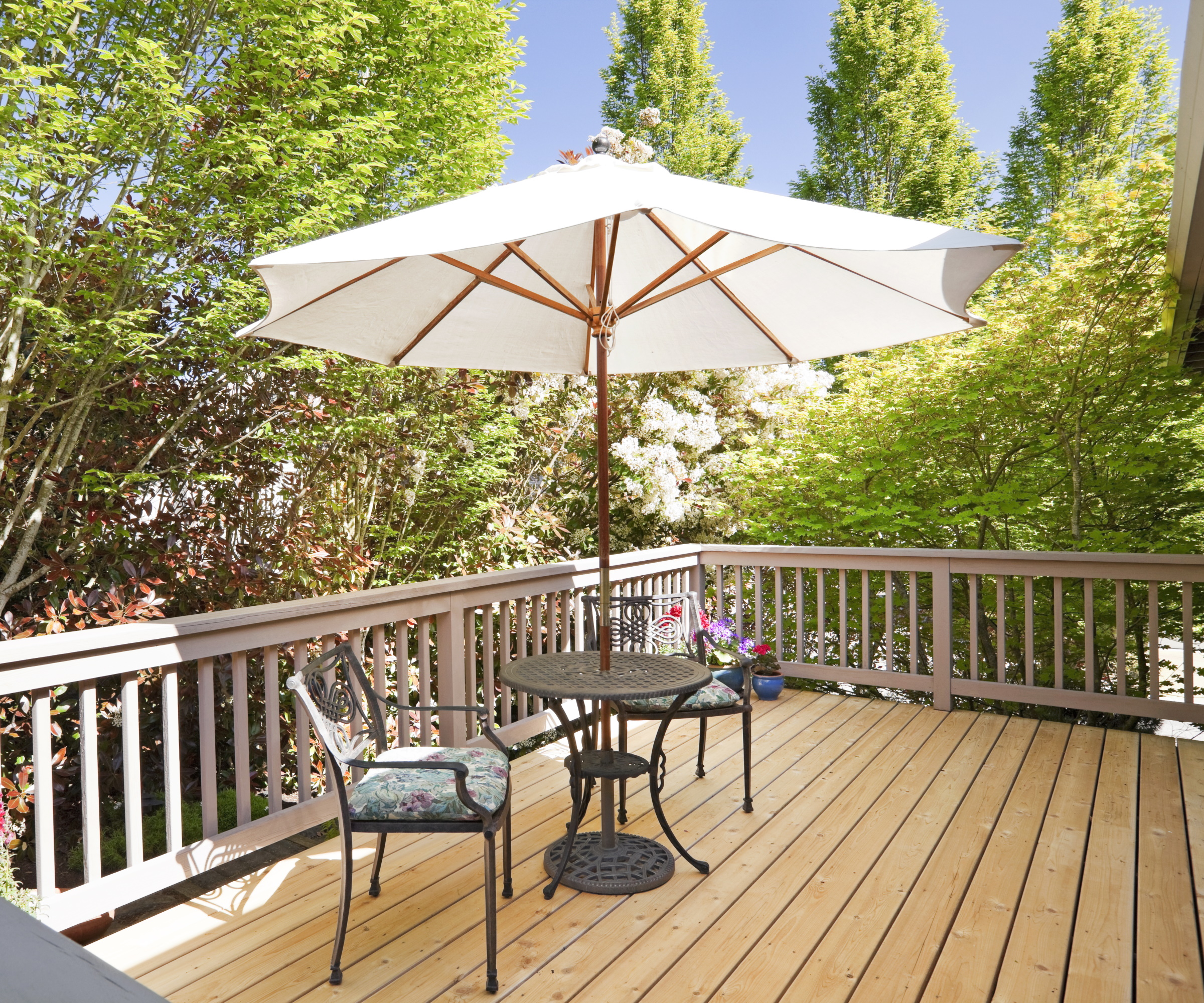
If you have outdoor faucets or water features, insulate them to prevent freezing and cracking.
Christensen says, 'As winter approaches, it's worth taking the time to prepare any taps, hoses or pipes so they won't freeze or burst.
'Begin by shutting off the water supply to outdoor faucets from inside your home. Then, open the outdoor tap to let any remaining water drain out. This ensure there is no water remaining which could freeze over the winter.
'Finally, insulate faucets with foam covers designed for outdoor use. This Thermwell Frost King Plastic Faucet Cover from Amazon is an affordable option that provides effective insulation against freezing temperatures.'
Step 3: Install gutter guards
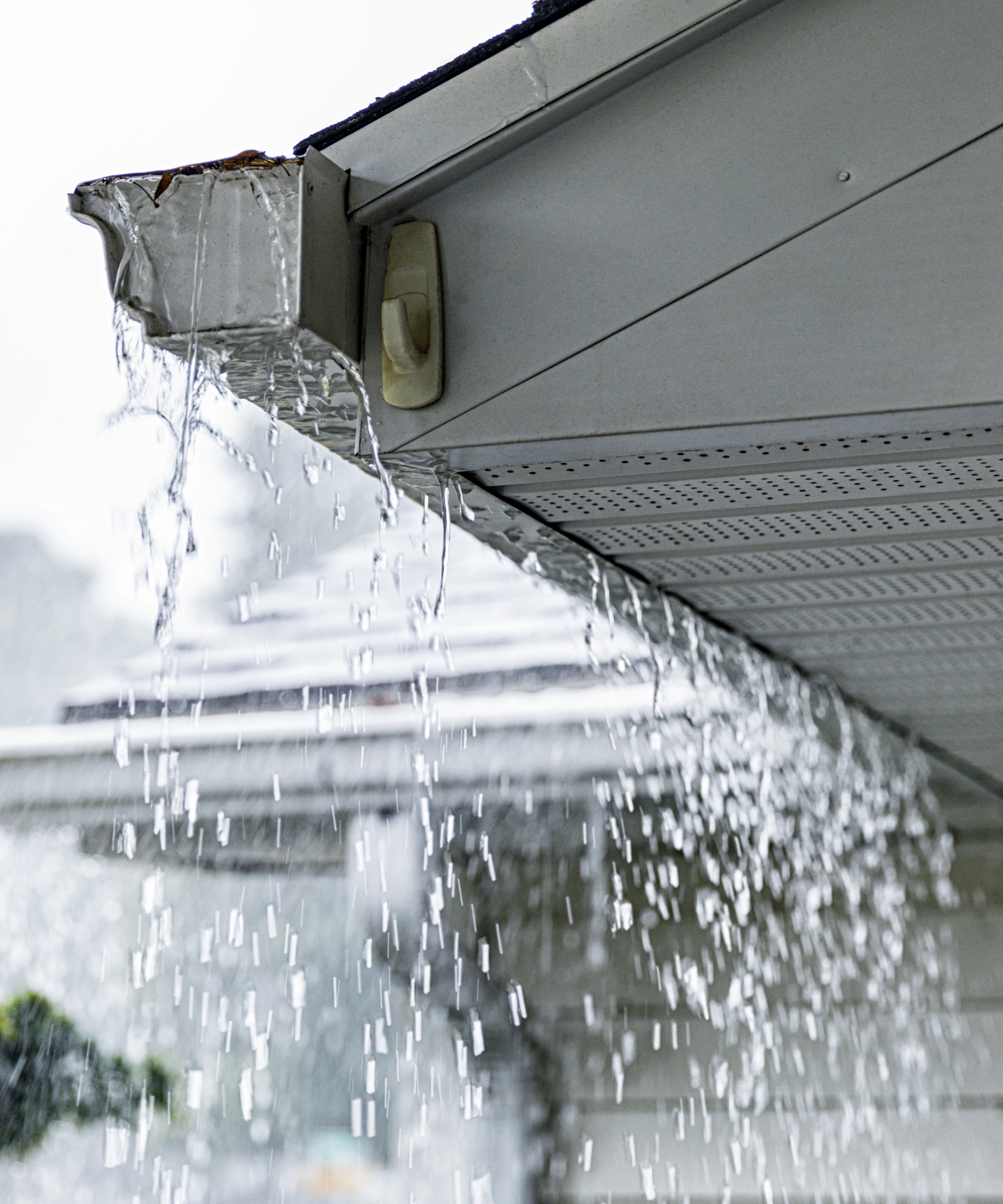
If your balcony has gutters, install guards to keep out leaves and debris.
Karina Toner, operations manager of Spekless Cleaning, says, 'Gutter guards prevent leaves and debris from clogging gutters, which can lead to ice damming and water buildup during winter.
'To install, clean out the gutters first, removing any leaves or dirt, then install gutter guards according to package instructions.'
Toner recommends the Gutter Guard Brush by Gutterglove, the FlexxPoint FlowGuard Premium 50-Year Gutter Cover System, and the Raptor Gutter Guard – all of which are available on Amazon.
You can find more info on how to prevent gutters from clogging in our dedicated guide.
Step 4: Store moveable items
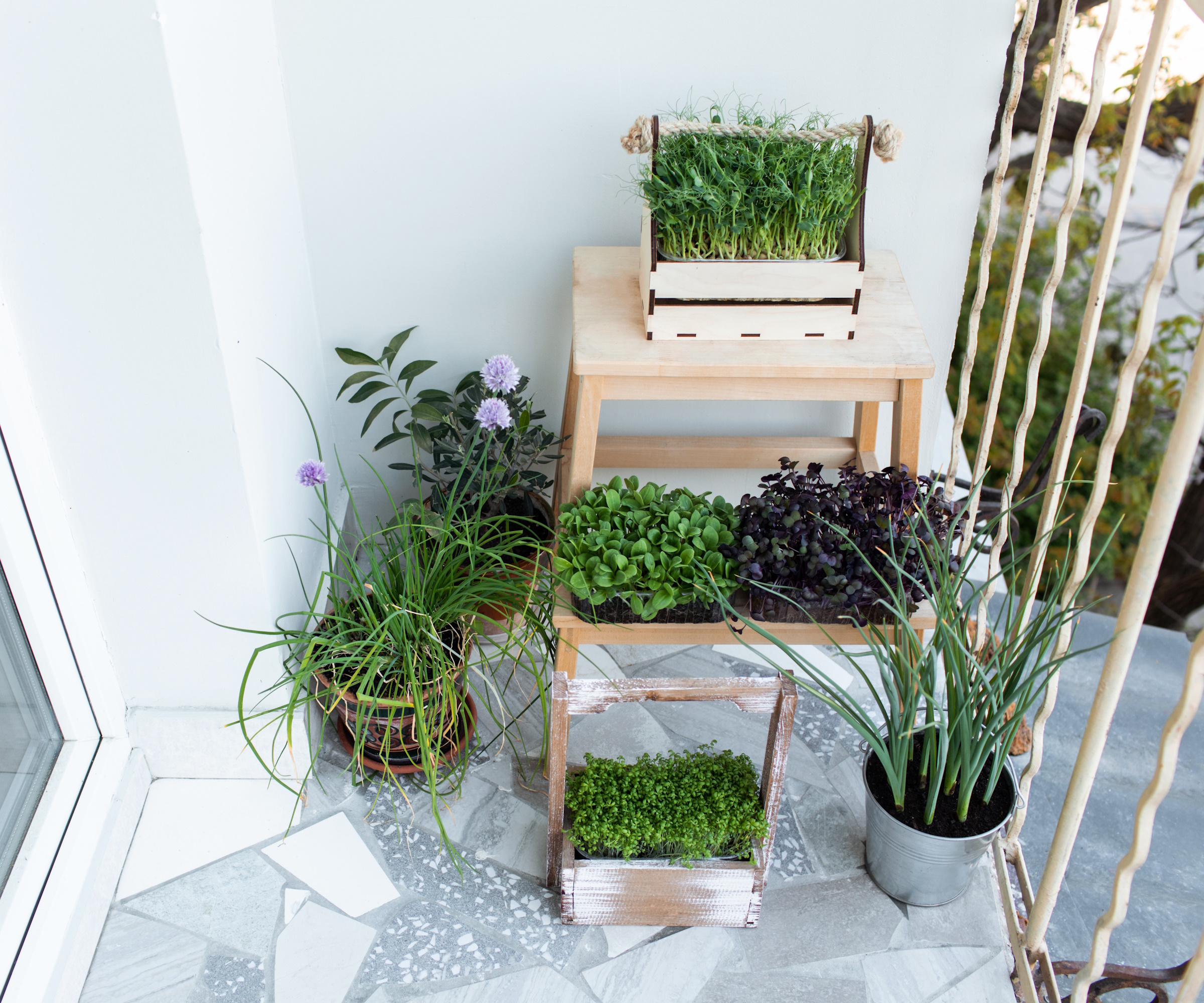
Windy winter weather can easily knock over lightweight items, like planters or decorations.
Christensen says, 'Store any movable items like planters, rugs, or decorative pieces that could be damaged by winter weather. Strong winds and heavy snowfall can turn these objects into hazards or cause them to deteriorate.
'If you have potted plants that are sensitive to the cold, consider bringing them indoors as well, or wrapping them with insulating materials to protect their roots.'
Learn more about winterizing outdoor container plants.
Lanterns and portable heaters are two other common balcony items that would be better relocated inside for the winter when not in use, should you have the space, but make sure to follow safety precautions and never run indoors
Step 5: Reseal grout
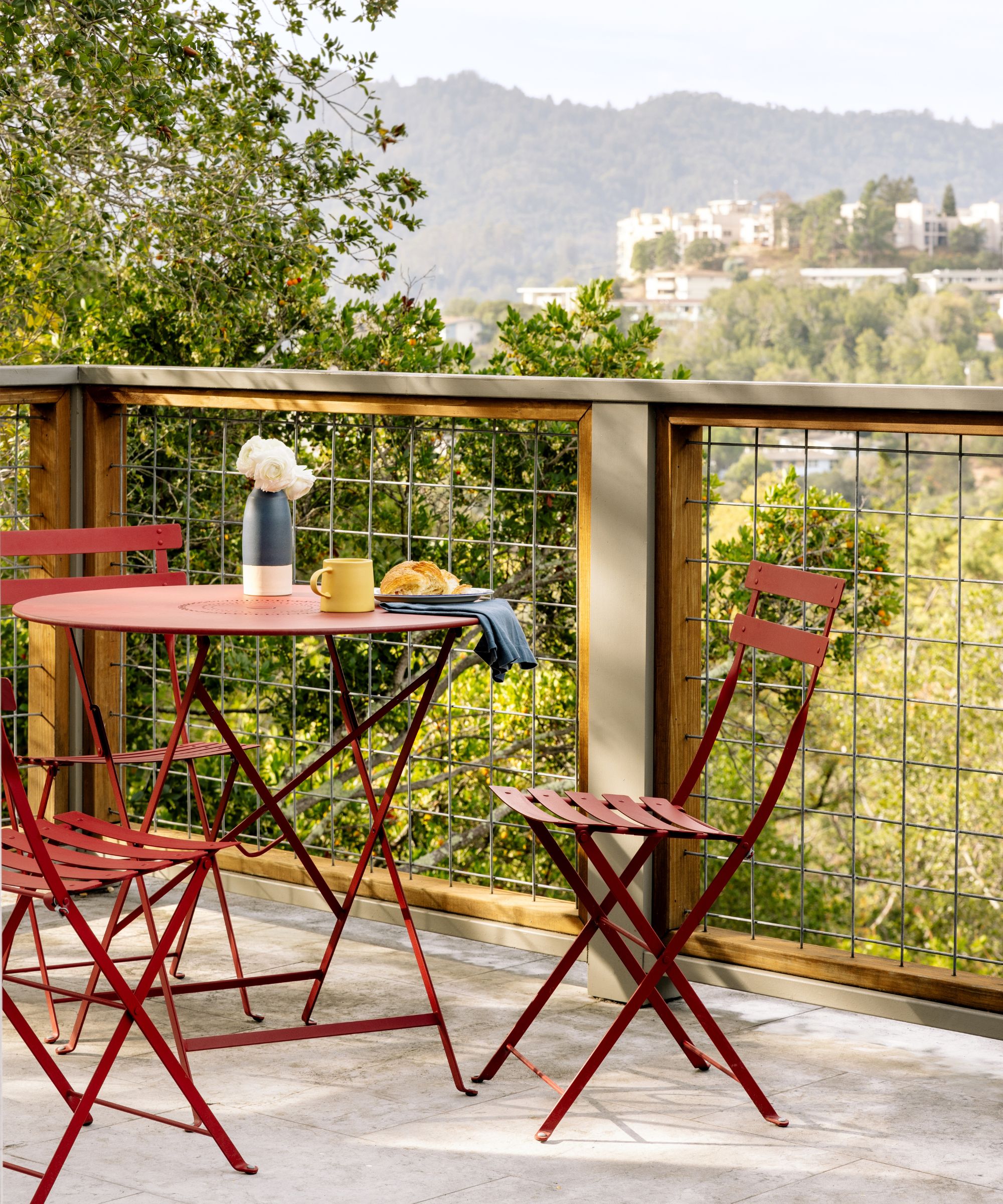
The grout between tiles on your balcony can crack and wear down over time. Before winter hits, reseal the grout to prevent water from seeping in, freezing, and expanding, which can lead to costly cracks and structural damage.
Steve Evans, owner of Memphis Maids, says, 'Before winter hits, it's vital to reseal your grout to avoid water or moisture seeping into the floors or walls. I like this Miracle Sealants 511 Impregnator Sealer from Walmart because it works for tile and grout, so you can seal the entire surface at once. You also have epoxy-based LATICRETE SPECTRALOCK Pre-Mixed Grout from Amazon, which doesn’t need any sealing.'
Watch out for these grouting mistakes the pros always notice, however.
Step 6: Remove mold and mildew
Mold and mildew thrive in wet, cold conditions – so it's a great idea to ensure your balcony is mold-free both before and after.
Evans says, 'During the winter, there’s a higher chance you see mold and mildew growing on your balcony. I’ve found this CLR Mold and Mildew Remover from Amazon has always worked for me, as it's compatible with many different surfaces – plus, it’s bleach-free, so it won’t stain any fabrics you have nearby.
Keeping your balcony clean will help prevent mold from worsening over winter. Algae has a particular habit of accumulating on decking, so if this is a feature of your balcony flooring, treat it with one of five slippery deck solutions.
Step 7: Secure hanging items
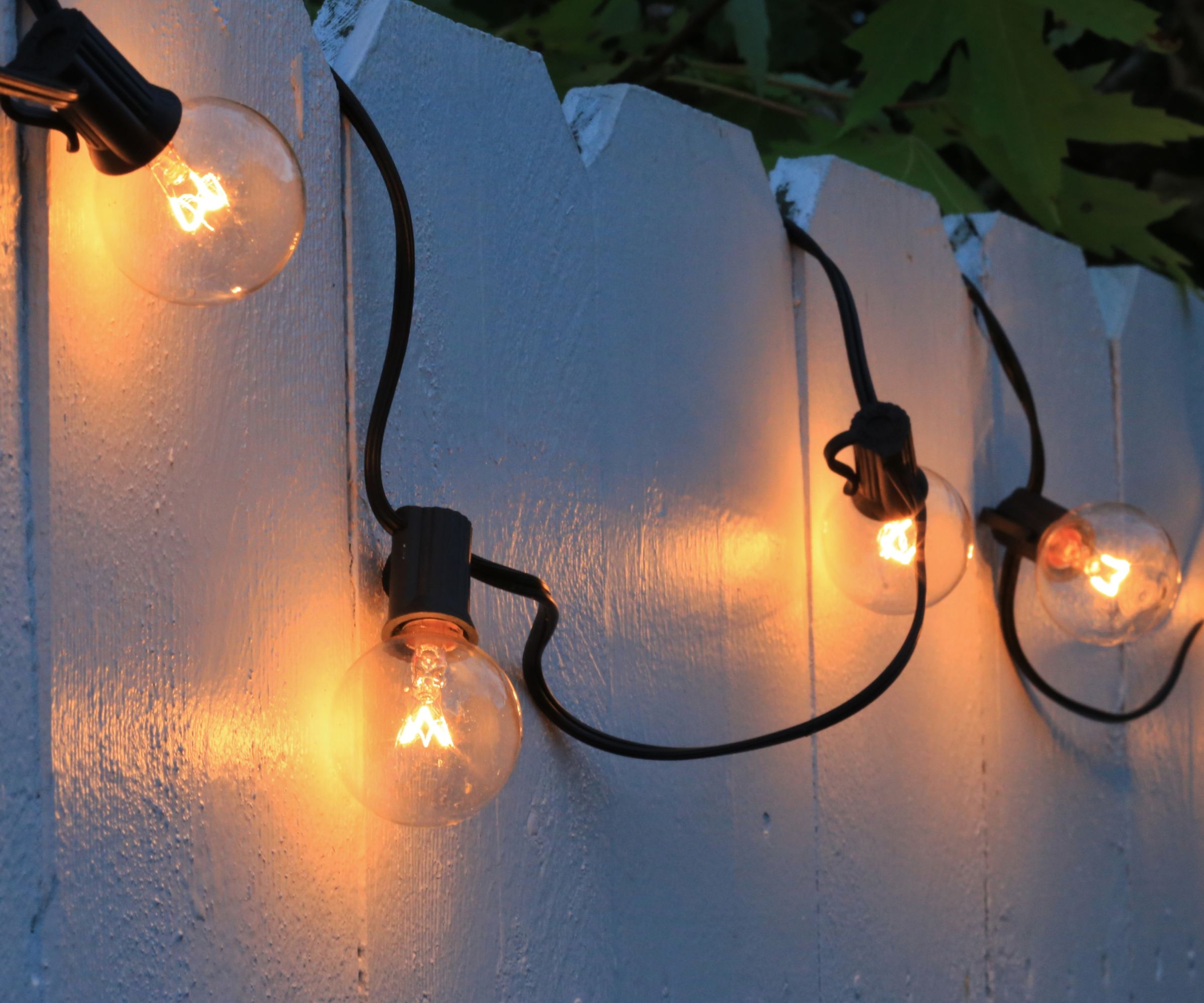
If you have hanging plants, lights, or decorations, make sure they’re securely fastened or remove them altogether.
Francisco Fuenmayor, a home improvement expert at LocalProBook, says, 'High winter winds and snow can turn hanging items like bird feeders or decorations into hazards. Therefore, I always advise taking down all hanging items and either removing them from the balcony completely, or securing them tightly to prevent damage.'
Fuenmayor recommends using heavy-duty bungee cords such as Amazon’s Cartman Bungee Cord Assortment, which are durable and weather-resistant. He adds, 'This handy set consists of 32 pieces, including various lengths and colors. Made from high-quality rubber, these cords are designed to withstand all types of weather conditions, including freezing temperatures.'

Put your feeder away for the winter once the hummingbird migration of these gorgeous little birds is done. This particular one holds 16 oz of liquid feed, has a bee guard and built-in ant moat to keep pests out of your winged friends's food source.
Step 8: Store away rugs
Even the best outdoor rugs are susceptible to mold and mildew in damp conditions.
Fuenmayor explains, 'Leaving rugs out in winter can lead to mold and material breakdown. For best protection, roll up any outdoor balcony rugs and store them indoors, or in a waterproof bag.
'If you must keep them out, go for a weather-resistant storage box, like the Keter Westwood 150-Gallon Resin Box from Walmart, which comes in two color options – dark gray or espresso brown. Its design is ideal for protecting items from moisture and will keep your rug looking fresh for next season.'
So there you have it – how to winterize a balcony in eight ways. Winterizing your balcony will help protect it against the cold and ensure everything is in good shape when warmer weather returns.
Next, check out how to winterize a garage like a pro.
Sign up to the Homes & Gardens newsletter
Design expertise in your inbox – from inspiring decorating ideas and beautiful celebrity homes to practical gardening advice and shopping round-ups.

With more than a decade of experience writing news, lifestyle, consumer, and human interest articles for a wide range of national and international publications, Andy is a highly-qualified journalist writing features for the national press. From front porch to backyard, attic to basement, Andy has written about every area of the home. He specialises in bringing together the best industry expertise to answer all of your most pressing home and garden questions about seasonal and everyday cleaning, decluttering, organizing and DIY.
-
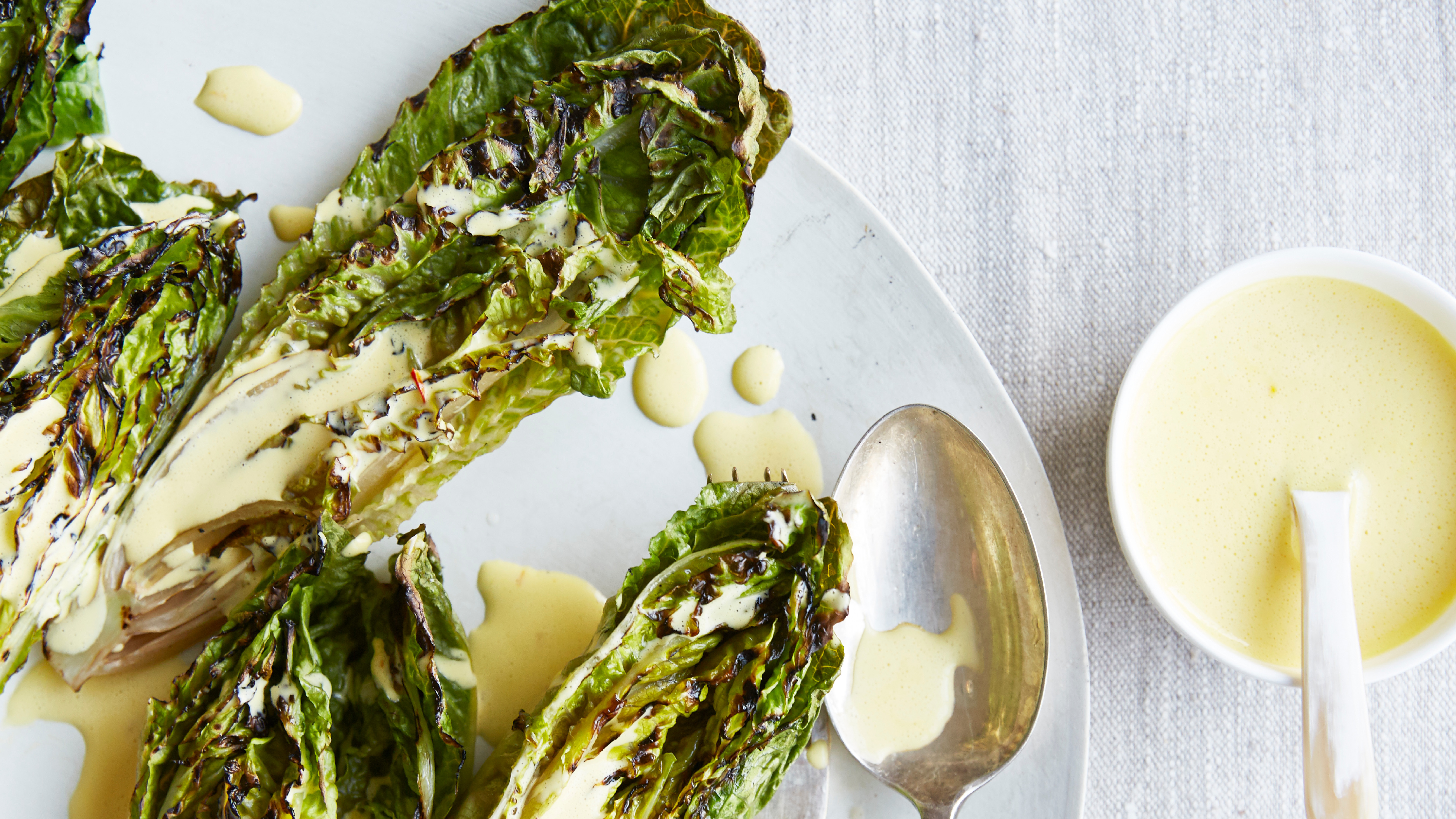 Charred little gem with saffron dressing
Charred little gem with saffron dressingThis recipe with charred little gem is both easy to make and sure to impress guests. It's the perfect side for fresh spring menus
By Alice Hart
-
 Grilled asparagus with herb and pickled red onion
Grilled asparagus with herb and pickled red onionThis grilled asparagus couldn't be easier, and it's a wonderful way to get the best flavor from our favorite spring veg. It's perfect alongside fish or lamb
By Alice Hart
-
 I tried the baking soda trick to quickly and naturally clean my outdoor rug – it’s now set for Easter outdoor hosting
I tried the baking soda trick to quickly and naturally clean my outdoor rug – it’s now set for Easter outdoor hostingBaking soda is perfect for lifting dirt and debris
By Eve Smallman
-
 The 5 worst things you can do to your fridge – these will drive up energy costs and result in pricey and regrettable repairs
The 5 worst things you can do to your fridge – these will drive up energy costs and result in pricey and regrettable repairsIt's crucial to swerve these blunders, appliance experts warn
By Ottilie Blackhall
-
 Extend the lifespan of your appliance with 5 simple but crucial washing machine maintenance tips
Extend the lifespan of your appliance with 5 simple but crucial washing machine maintenance tipsFrom cleaning the filters to keeping the door open, experts reveal the washer tips they swear by
By Andy van Terheyden
-
 5 vital ways a home battery backup can help with your most urgent needs in a power outage – from heating to flood prevention and calls
5 vital ways a home battery backup can help with your most urgent needs in a power outage – from heating to flood prevention and callsExperts say they're a worthy investment
By Clement Feng
-
 I’m an HVAC technician, and this is when I turn on my AC each year – plus 5 checks I always do beforehand
I’m an HVAC technician, and this is when I turn on my AC each year – plus 5 checks I always do beforehandSave yourself an AC hassle by running my checks and turning it on before big heat hits
By Josh Mitchell
-
 6 things you should never throw in the trash – and what to do for safe disposal instead
6 things you should never throw in the trash – and what to do for safe disposal insteadFrom batteries to space heaters, experts reveal what not to throw
By Andy van Terheyden
-
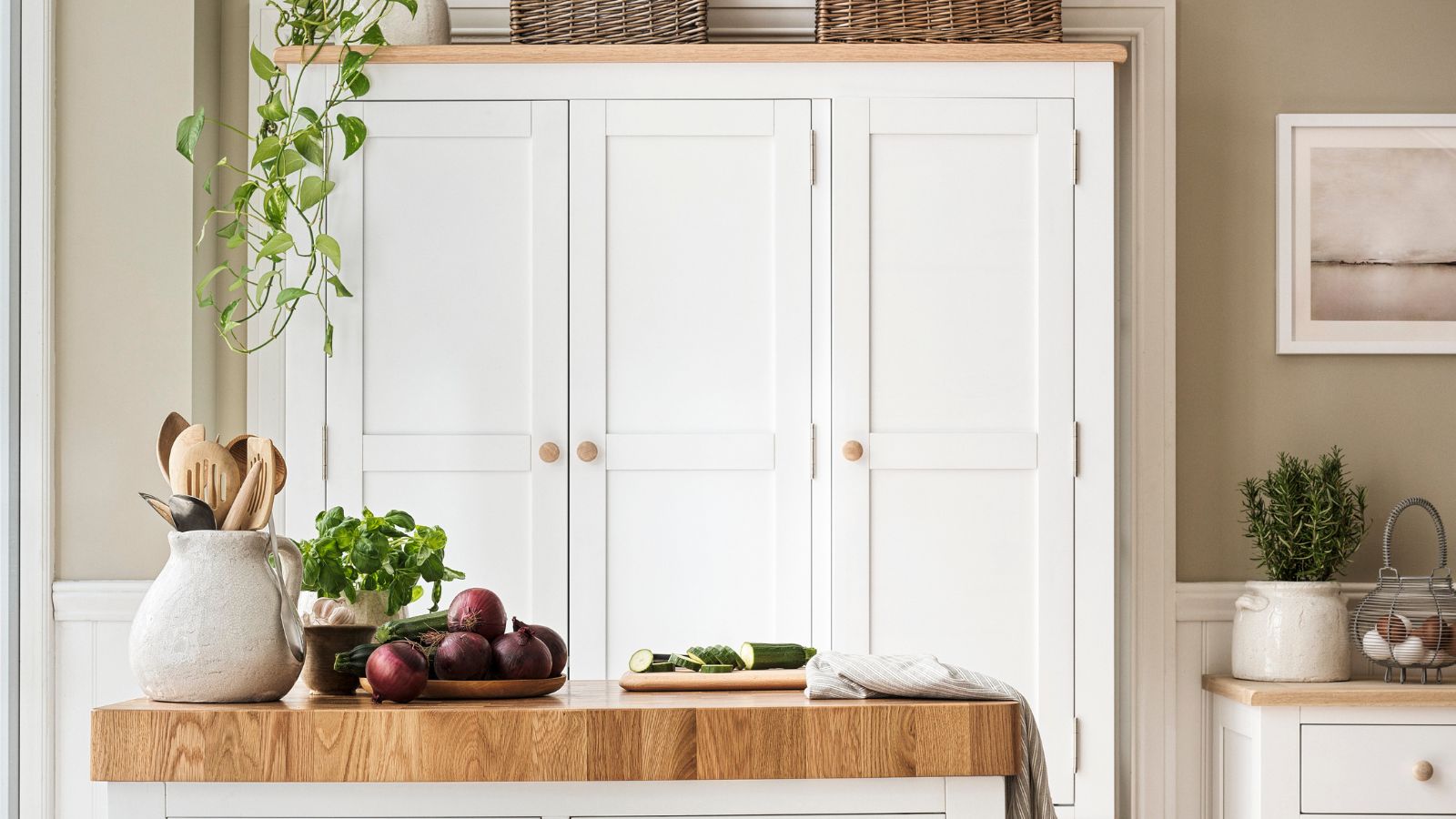 7 spring home maintenance mistakes to never make – overlooking these now can lead to pest problems and structural damage
7 spring home maintenance mistakes to never make – overlooking these now can lead to pest problems and structural damageHome improvement pros share common mistakes and what to do instead
By Eve Smallman
-
 10 common but little-known HOA fines to watch out for – and how to avoid them
10 common but little-known HOA fines to watch out for – and how to avoid themFrom sprinklers to garage doors and external pipes, your HOA contract may leave you open to a fine
By Eve Smallman